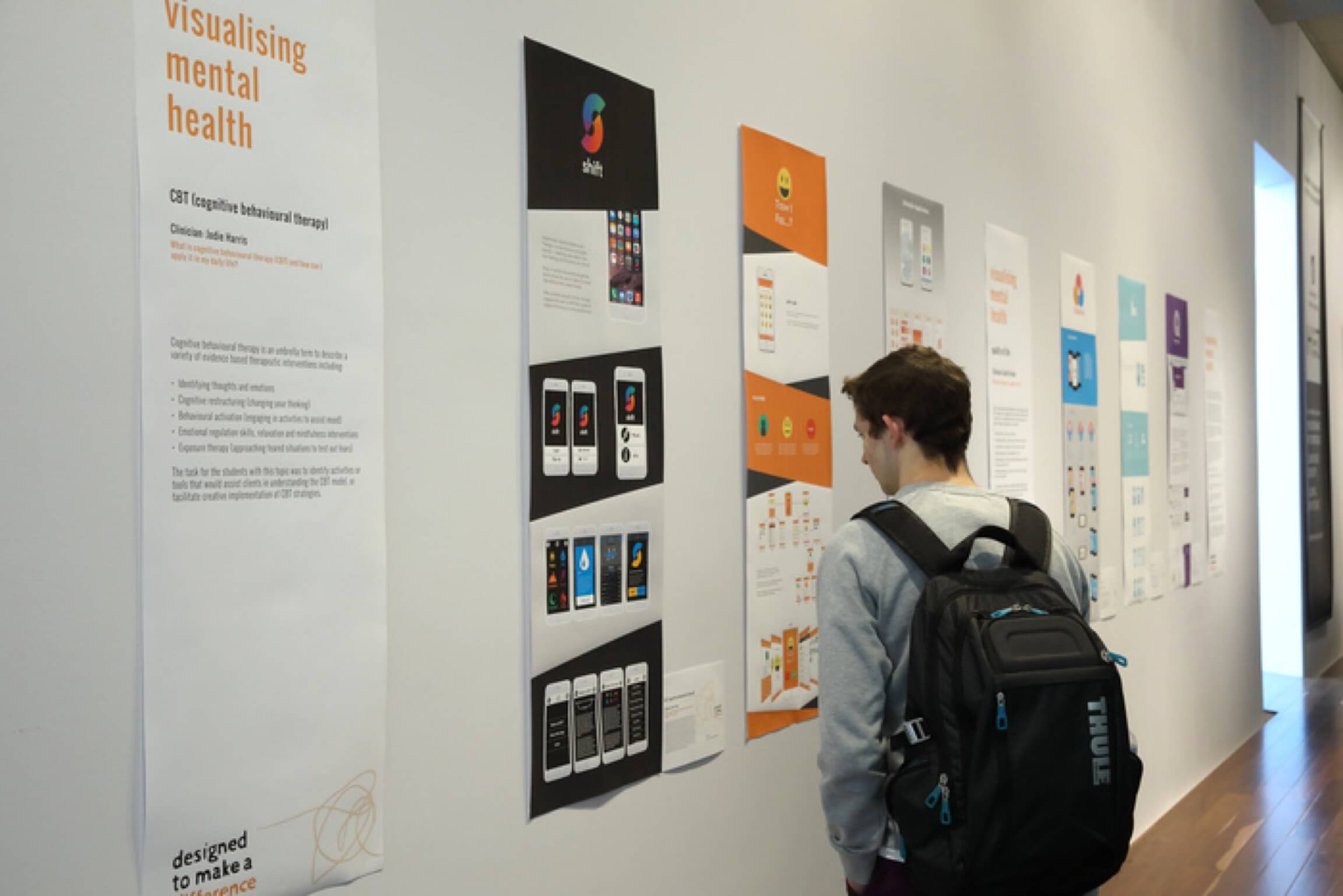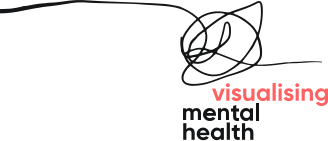Getting the projects up on the website
In the Visualising Mental Health topic, student groups take a psychological or mental health concept (e.g. better understanding emotions) and come up with unique ways to communicate that concept to a broader audience.
This results in many different types of projects:
- posters
- social media objects
- websites
- mobile app designs
- tangible hand-held objects (e.g. mocked up loot crates)
- animations/videos
- stickers
- books/magazines
- toys
- public installations
During Mental Health Week in October, we ask the student groups to prepare their ideas for exhibition. Hand-held objects (e.g. books, toys) are displayed on plinths or tables, but the majority of the exhibition consists of large posters on the walls. These posters are created by the students to showcase their main concept. The posters are created as pdf files that then get professionally printed. For example, here is the pdf file for the project called ‘The Quarry’.
Here is a picture of the posters hanging on the wall of the Kerry Packer Gallery, where we hold our exhibitions.

Translating these pdf for the website is my (Gareth) job. It is made easier by the neat way the web-designers created this site.
You see they created a set of simple formatting commands that I can use within the WordPress editing window that allow me to recreate, as best I can, the basic layout of the posters. Put simply these commands allow me to quickly create 1, 2, 3, and 4-column layouts within the same post. For example if I want an image to span the post I use a ‘(wide)’ command. If I want four images lined up across the screen I use a ‘(fourcols)’ command. It is frankly ingenious and with a few small commands I can get a given project page to look fairly close to the original poster.
Getting the images out of the pdf’s is another matter altogether. Depending on how the students have created the pdf, some of the images can be extracted easily in their high quality jpg format. However, sometimes I need to to access their in-design, illustrator or photoshop files to get an image. Worst case scenario, I use the ‘snipping tool’ in windows to take a screenshot of part of the pdf. Not ideal, but it gets the job done.
I’m getting a little better at the process over time, which translates into more closely approximating the students’ original posters on the website.
Anyway, this is just one way that we try to give the website the same feel as the exhibitions 🙂

